https://lorettecluzajic.partial.gallery/
In this series, we get to know the Artists behind the work with ten questions about their practice, their space, and their ideas. These are their Stories.
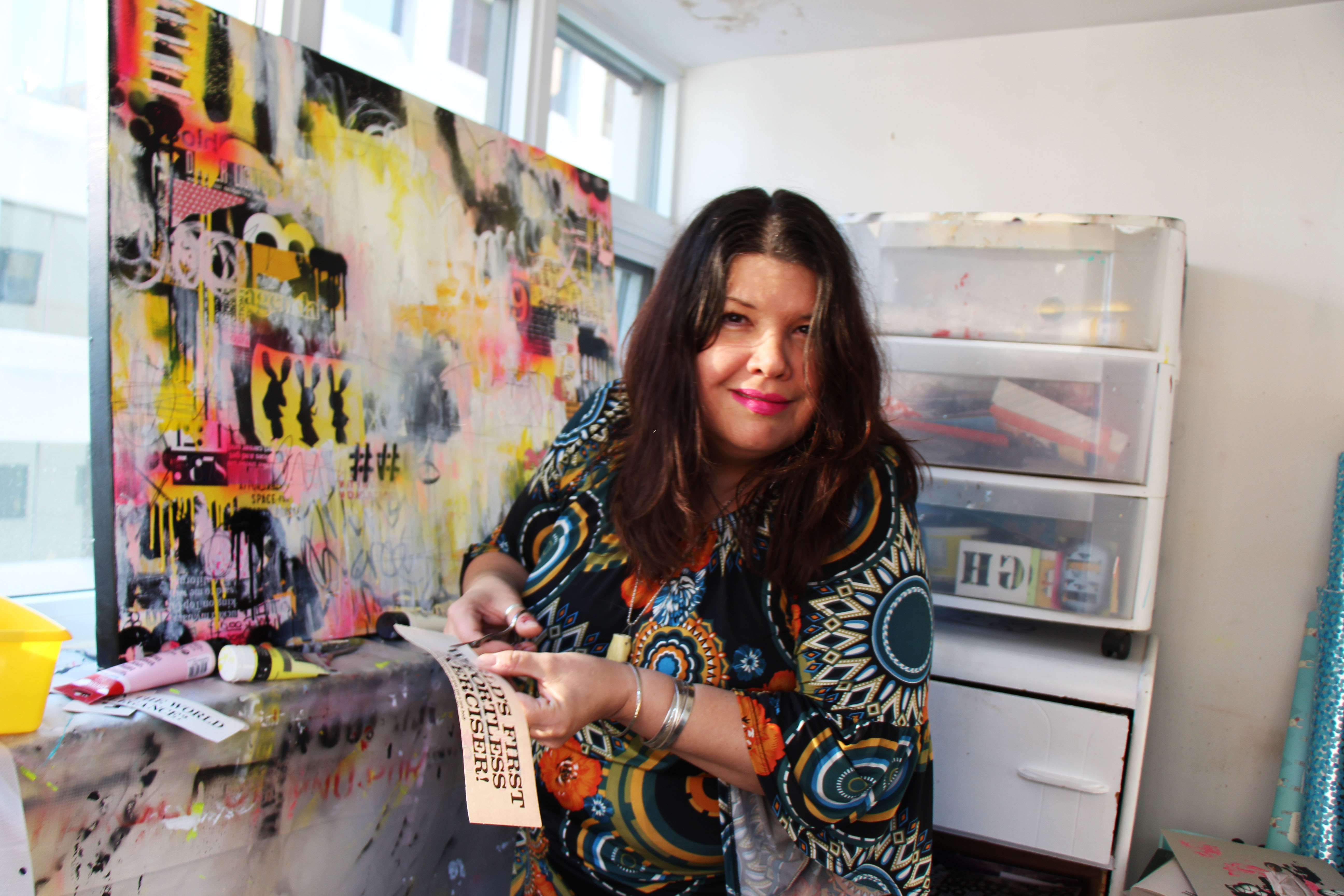
Lorette C. Luzajic’s Shop
Lorette C. Luzajic is an award-winning mixed-media artist in Toronto, Canada. Her artwork has been collected at home and in at least 25 other countries, including America, Japan, Germany, Estonia, Qatar, UAE, Tunisia, China, Australia, Italy, France, Scotland, Peru, and the Netherlands. Her work has been shown in galleries, museums, hotels, banks, nightclubs, restaurants, fine art auctions, laundromats, and medical offices; as a prop in movies, commercials, and reality TV; as a 20 foot billboard in New Orleans; in an ad campaign for luxury jewelry company Carrera Y Carrera; and on an electric guitar in a diamond store. Her work has also been shown in India, Ireland, New Zealand, Spain, Mexico, and North Africa. It is in collections with Ellsworth Kelly, Jean Dubuffet, Benjamin Chee Chee, Erte, Joan Miro, and more. Lorette is also a writer who usually writes about art. Her latest poetry book, Pretty Time Machine, is a collection of ekphrastic prose poems inspired by visual art. She is the editor of The Ekphrastic Review, a journal devoted to literature responding to art. She also loves art history, cooking spicy world foods, watching Flamenco, cats, and travelling. Visit her at www.mixedupmedia.ca.
Her latest poetry book, Pretty Time Machine, is a collection of ekphrastic prose poems inspired by visual art. She is the editor of The Ekphrastic Review, a journal devoted to literature responding to art. She also loves art history, cooking spicy world foods, watching Flamenco, cats, and travelling.
How did you develop your art style? How would you describe it?
It is difficult to describe my style, which incorporates abstract and action painting, New York styles, surrealism, conceptual art, graffiti, collage and assemblage, and more, but I sometimes refer to it as urban expressionism. My 12×12 inch signature squares tend to be more representational and surreal and my larger works are more abstract, but they all incorporate the elements I collect from the world around me, especially images, text, poetry, photography, music, and art history.
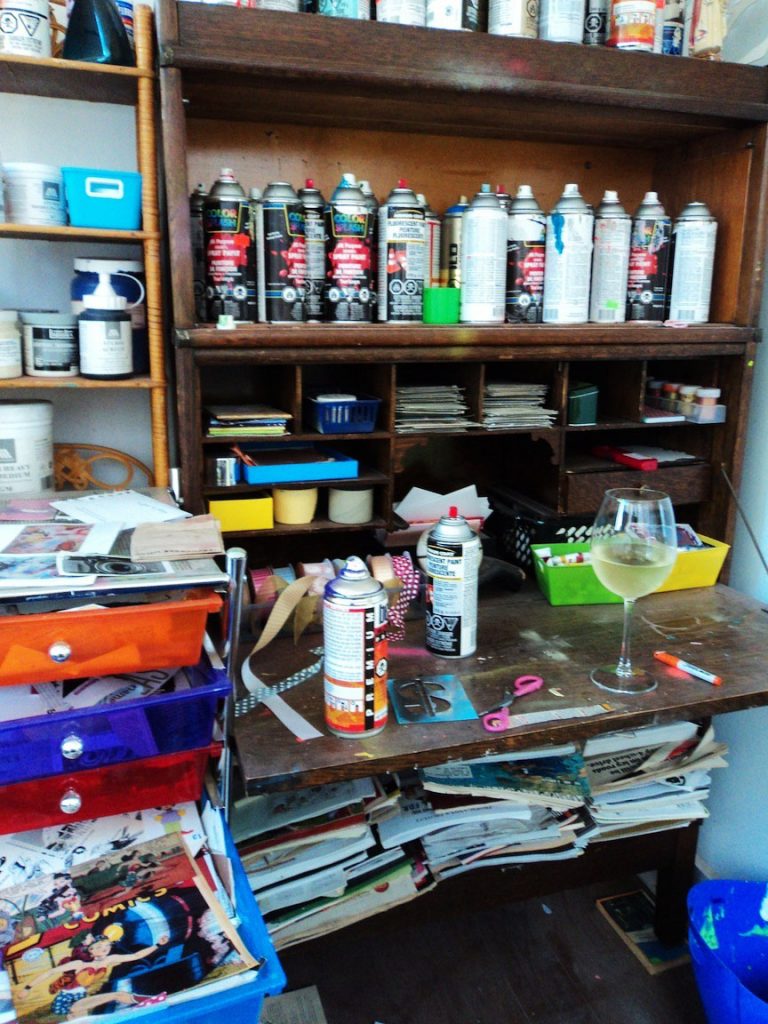
Everything I do emerges from collage, which I have explored over the years in a variety of ways. I have worked with representational images cut up and rearranged, with found text in a magnetic poetry kind of way, with abstracted fragments, with vintage photographs and photography I take myself as well. I am often inspired by the themes and words in poetry and other literature, and symbols and words are layered into my paintings. I’ve worked in spare minimalism, simply arranging bits of torn paper onto paper; I have worked in epic sizes with thousands of fragments and layers. Even my love of mixed media- acrylic paint, spray paint, pastel, chalk, pigment powder, gouache, graphite, glitter, latex, enamel, pencil crayon, tissue, gold leaf, wax, crayons, you name it- is born of collage and the concept of using the whole world as my palette.
Describe why you chose your particular medium?
I am curious about everything and passionate about such a diverse range of areas. I have always been especially attracted to words and images and collage allows me to play with both at the same time and is unlimited in theme and subject matter. Exploring and experimenting with a variety of materials continues to excite me and I keep adding more. I started out more simply, with pure paper collage, cutting hundreds of images and juxtaposing them, just scissors and paper and glue. Once I decided to add painting materials to the mix things really started to explode!
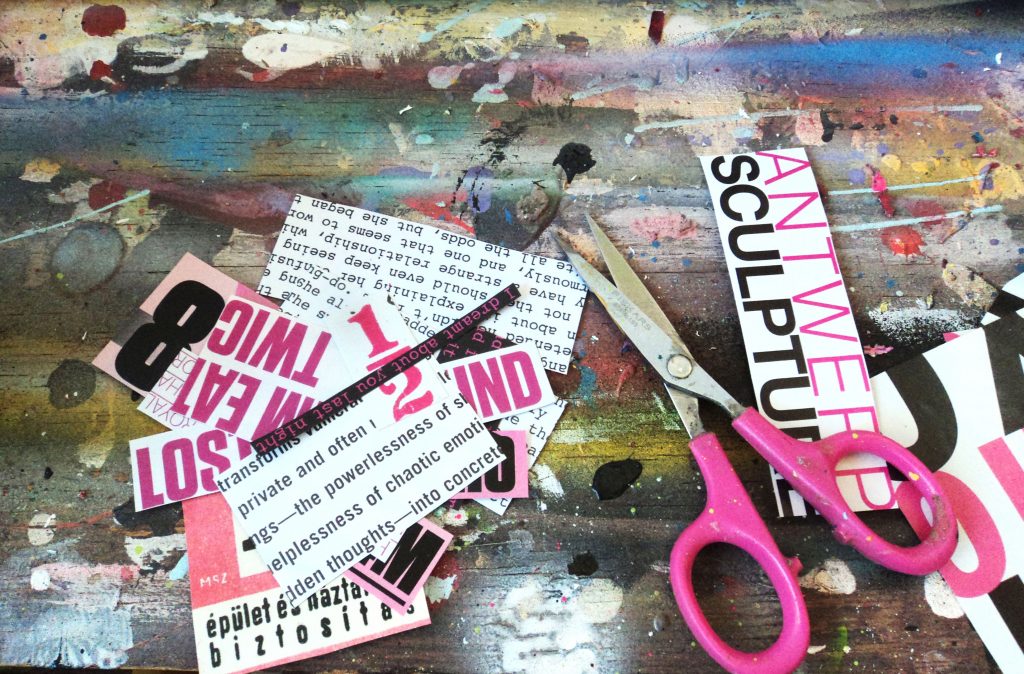
What was the first art piece you created?
The first piece I can remember creating was an acrylic painting in high school, of Adam and Eve with one breast depicted as an apple. On top of this dreadful cliché was the terrible composition! I was already drawn to mixed materials, clearly, because that was shortly followed by a massive installation/sculpture of various dolls and found objects painted and glued on a picnic blanket. I was attempting to portray that kids from a variety of backgrounds played together with no prejudices, to make a statement about world peace. What followed was a few years focused on polymer clay sculptures and beads, and then I began cutting up images and something ignited inside of me that couldn’t be put out.
Tell us your process in starting a new piece?
My mind constantly feels like a whirlwind of connections and juxtapositions. A line from a poem or an image that appeals to me will spark something, which will spark something else. Every work begins with what I call a seed- it might be an interesting phrase, a colour I’m drawn to, a pun, or an Al Green song. Often it is a juxtaposition- I’ll see a shape or an image or a concept, and it will remind me of an unrelated one. Putting them together and making them fit is the spark.
I usually have many works on the go, of all different sizes and kinds. My whole home is my studio- my library, office, and studio are all kind of one place, with a corner for the wet work or messy stuff. I hop around from piece to piece, sometimes focus for hours, sometimes pop in to embellish one stroke or glue something down, then carry on with making dinner. They can take a couple of hours, or a couple of years, depending when I am happy and feel they are finished.
What inspires you to create your work? What do you want your art to express?
I always say “eclectic curiosity” to respond to this question. I’m interested in everything! I sometimes feel like a machine that absorbs the whole world, then shakes it out in fragments for some random and interesting combinations that I wrestle into a kind of raw beauty. I want my work to inspire the same kind of curiosity, to make people pay attention to everything around them, to make them feel alive. I want people to see the darkness but to live for the beauty and find it all around them.
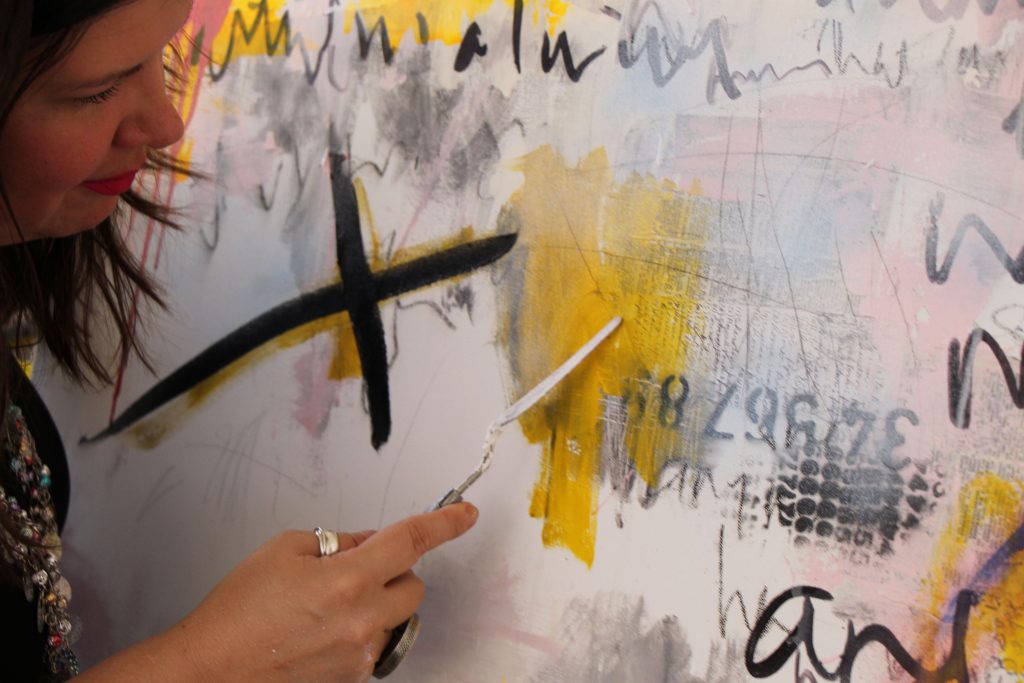
What was your experience like selling your first art piece?
I sold some artworks from each of my earliest art exhibitions, so that was very validating and affirming for me to feel audience excitement and intrigue in my creations. But it also gave me the wrong idea- I thought that all I’d have to do was make art and show up and I would magically be able to support myself and grow as a painter!
That said, art was how I survived. It was incredibly healing and it gave me purpose and expression. In my early days I was struggling with untreated bipolar disorder, anxiety, and serious addiction problems and I saw art as a way out of my predicament. I was finishing up a degree in journalism and knew I wasn’t capable of the pressure of working in the news business.
I had wanted to study something more practical than poetry, so the program was an attempt to get my life together, but now I was ending up in serious debt without the confidence or stability to pursue what I had studied. Those early sales made me feel invincible and think I would miraculously make my way in the art world with ease. I didn’t know it yet then, but my art was actually terrible. It contained some raw material and interesting creativity, but I had no sense of composition and the constant themes of sarcasm, oppression, victimhood, I’m-so-depressed, and screw society were banal and immature.
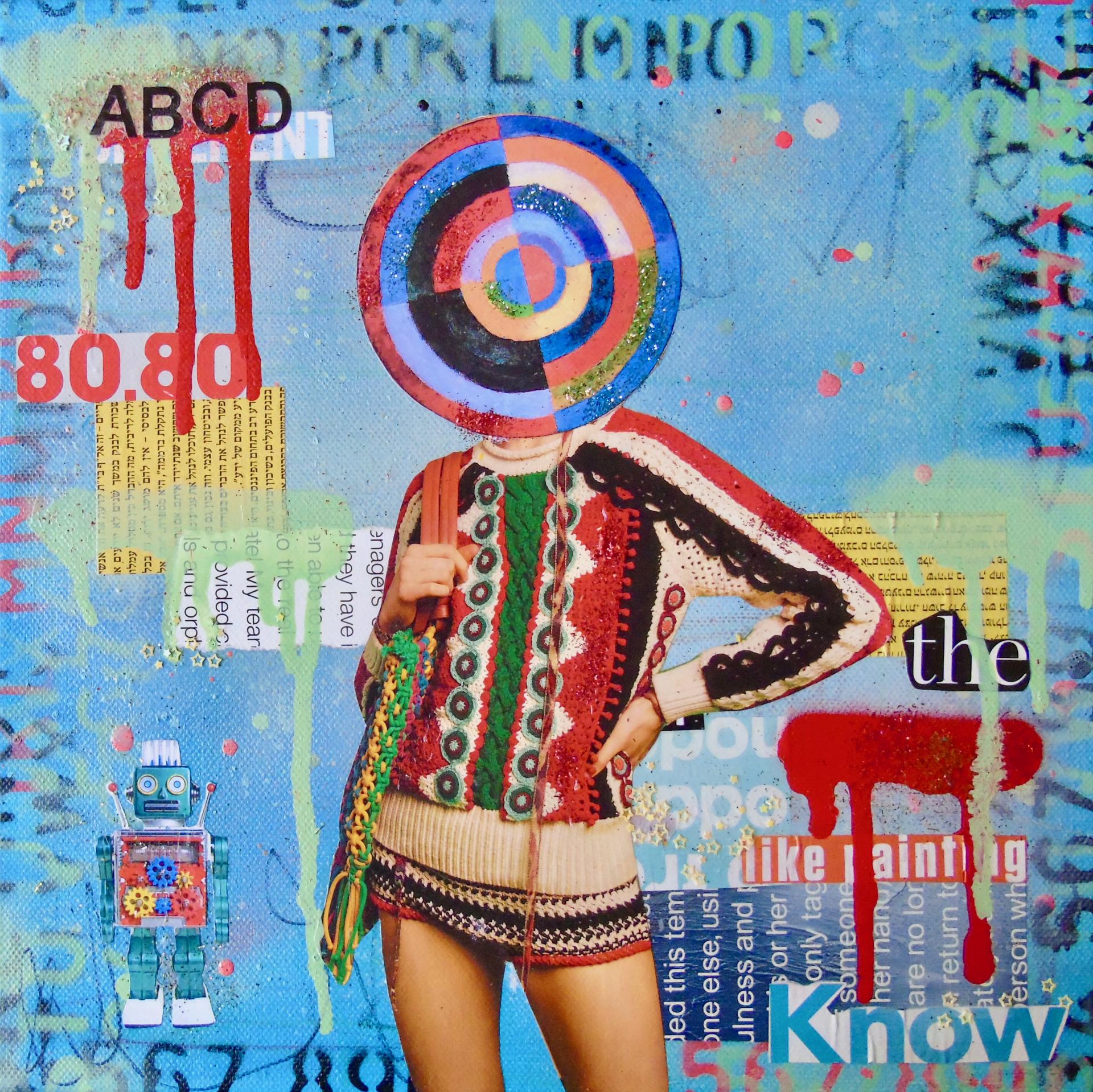
On the other hand, perhaps it is a blessing in disguise that I was so impulsive then. I went all in with the dream, absconded from the pursuit of news, and was thoroughly schooled by life as I painted madly and grew as an artist. After being diagnosed and getting treatment, I found several wonderful organizations for artists with mental illness: Touched By Fire with the Mood Disorders Association of Ontario, and Workman Arts, a longstanding multidisciplinary arts organization for present or past patients of CAMH. These incredible places gave space and voice to my journey and pushed me to professional development. I’m still involved with Workman Arts, and through them, have now been teaching mixed media art to clients at the Centre for Addiction and Mental Health for several years.
Have you ever been unhappy with a work you created?
Oh, yes, usually. I’m prolific, but even more works than you see never made the cut. I am really prone to overdoing it. Even though the mix and match and chaos are the charm, they are also the weak point. I’m constantly striving to allow more space and room and keep things a little bit leaner, give my audience some room to absorb and process what they are looking at. But more often than not I glue down one too many things and add too many touches and turn up mud. But it’s all part of the process.

If art was never part of your life, where would you be?
Honestly? Dead, probably.
Taking a break from art, how do you spend your free time?
I never take a break from art. If I’m not cutting up images or painting, I’m taking pictures. Reading and writing poetry. Visiting museums and art galleries. I study art history daily and have been passionate about that for over thirty years. Even my love of cooking is like collage- I play with everything and try out new combinations. I love travelling, but that is in most part to see the art and creativity of that part of the world- art can be dance, music, fashion, crafts, etc. I’m the editor of an arts journal, The Ekphrastic Review, devoted to poetry inspired by painting. It takes up an enormous amount of time but I love it so much.
I enjoy walking through cities, spending time with friends and family, I love wine and cats and books and music. But I can’t stand not working. I work seven days a week and feel more tired if I take a weekend out of town to relax. It doesn’t matter if it’s painting, writing, administrative, promotional, shipping, taking photos, marketing, or uploading art online- I have to work or I start to feel disconnected and panicked!
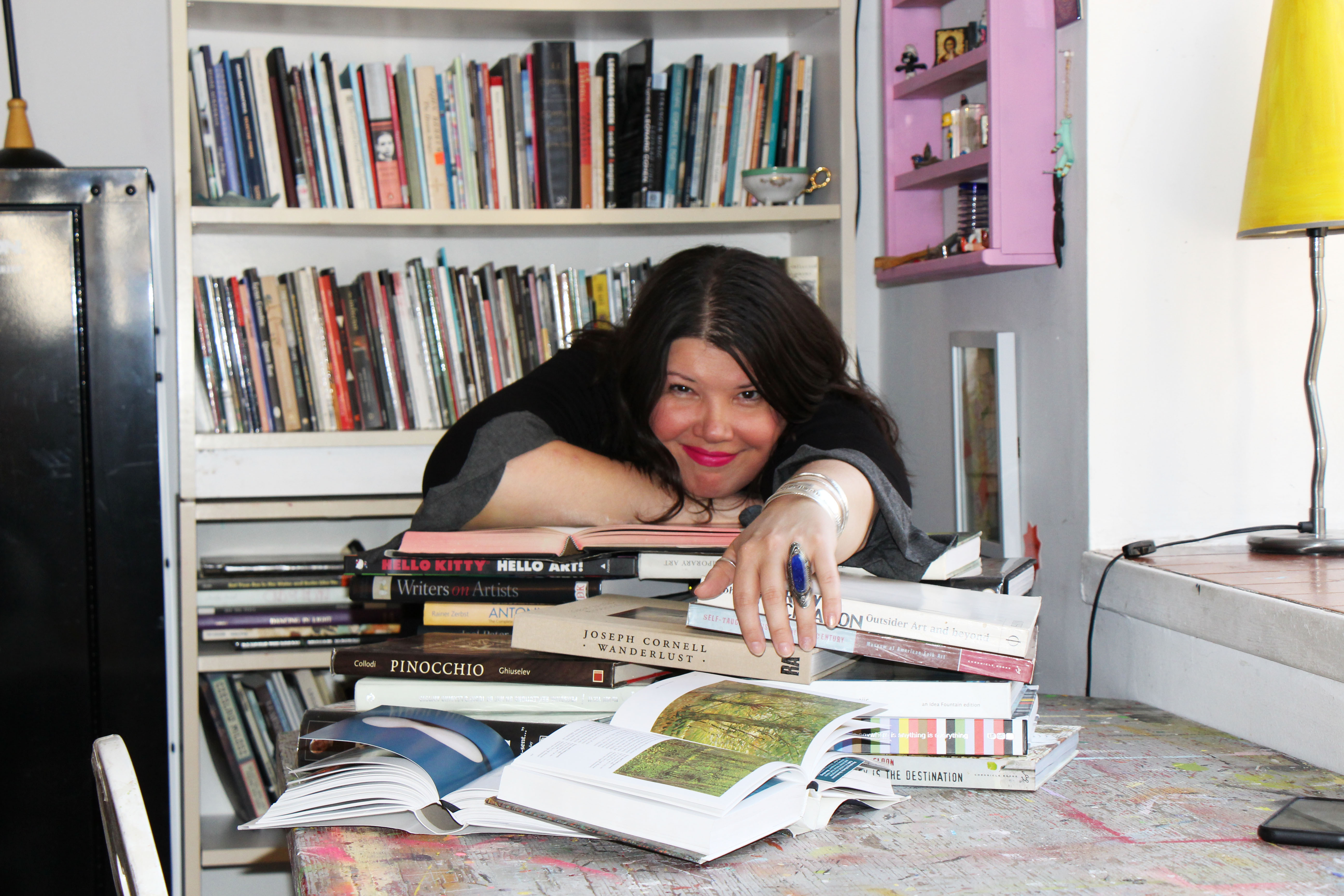
Where would you like your art to take you in the next 5–10 years?
I want to experience the whole world, and I have loved the opportunities I’ve had to work in Mexico and Tunisia, showing and creating art. I want to do art residencies in a variety of countries. I want to continue sharing the healing power of art and poetry with people experiencing grief, addiction, and depression, and I want to write even more about art and inspire a wider audience to engage with ways of looking at art. I want to experiment with ways to collage I haven’t done yet- image transfer, silk-screening, encaustic, and sculpture- and ways I haven’t even thought of yet.
Shop Now Lorette C. Luzajic’s Work
Do you want to be featured? Join Partial as a Pro artist and e-mail us at hello@partial.gallery. We’d love to share your work.